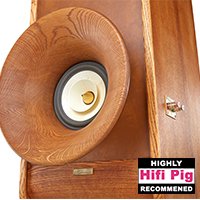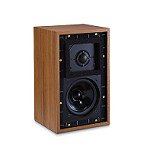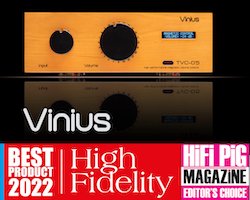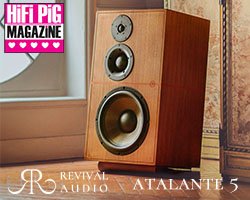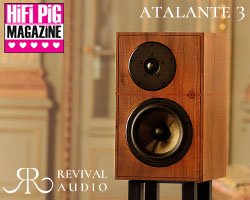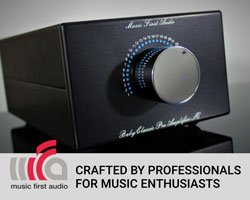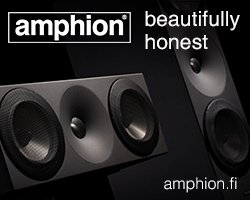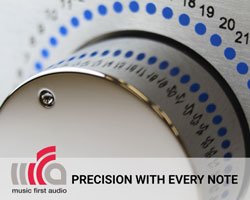FALCON BBC LS3/5a LOUDSPEAKER REVIEW
The BBC LS3/5a must surely be one of the most famous loudspeakers in the world, in this review Stuart Smith checks out the Falcon Acoustics BBC LS3/5a Gold Label model costing from £2475.

The wellknown LS3/5a with the Gold badge indicating marked internal improvements
There can’t be any other speaker quite so iconic as the LS3/5a and few that divide opinion quite so much as this diminutive wee beasty. I remember reading about them when I was first getting into HiFi in the early to mid-eighties and they have been on my “must scratch that itch” list ever since. On the second-hand market, the originals fetch daft money and that doesn’t really seem like changing any time soon. When the opportunity to buy a pair of the Falcon Gold Label LS3/5as at the Bristol show a year and a half ago popped up I couldn’t help myself. I’d heard these specific speakers a few times before and I really “got” them when partnered, if I remember correctly, with Primare electronics. Even in the confines of hotel rooms, I was smitten by the way they image (very important for me) and how really well they seemed to play music so naturally and so unforced. However, the box with the speakers in simply wouldn’t fit in the car on the way back to France and so they languished safely in Barnsley up until a few months ago, but then the Krell amp I wanted to pair them with was back with Krell in the US having a full refurb’ and so hence a bit of a delay in getting this review written.
Praise for these diminutive speakers is loud and, as I mentioned, so is the disdain. I distinctly remember reading a comment on a forum (we must be going back a good while as I’ve not visited a forum in years) saying that the worst system one member had ever heard was round at a reviewers who had a pair of LS3/5a’s – I forget the rest of the system. This person described the sound as being (as I remember) lifeless and insipid.
The LS3/5a’s have a reputation of only being able to play some genres of music well (think what I would call “audiophile music”) and don’t do rock or anything with any bass – so, the perfect speakers for folk like us that listen to a lot of techno…not. When the speakers arrived I put a photo up on a dedicated LS3/5a group on Facebook and in the background of the photograph was a sculpture of the Motorhead Snaggletooth character we had made (thanks Alan) and someone made the comment that Motorhead was a very odd choice to pair with these speakers. Regular readers will be aware that a good proportion of the music that makes up our daily fodder is pretty bass-heavy. “Great buying decision then, Stu” I hear you say. Well, an itch is an itch and you do just have to scratch it! We have a couple of dedicated listening spaces at Pig Towers – one is a big room and one is what I’d say is about the size of a normal UK sitting room – though the latter at ours has a HiFi, two chairs, room treatment and no more in it. Needless to say, it is the second and smaller room where I am choosing to write this review from. Realistically, the wee threes just aren’t going to move the air in the big room – it’s no use trying to think that they were.
HISTORY
Way back in the late sixties the BBC was looking to produce a loudspeaker to use as a nearfield monitor for their programs, specifically a loudspeaker that was natural, dynamic, and would work in small spaces like studios and outside broadcast vans. This was birth of the LS3/5 with the A being added after KEF, the supplier of the drive units altered them and mods had to be made to the speaker itself. Licenses were issued to a few manufacturers to make the LS3/5a and in ’87 further changes were made (to the crossover) after changes to the mid-bass drivers (KEF’s B110) and the speaker’s impedance went down from 15 to 11 ohms. The speakers have sold in huge numbers and have cult-like status. There’s loads of information out there on the internet about these speakers and here’s not the place to go into detail about them.
CONSTRUCTION
Most folk who have had an interest in the LS3/5a will be well aware of what the speaker looks like. Size-wise you have a 30.5 x 19 x 16.5cm (12 x 7.5 x 6.5 inch) box that sports a 110mm mid-bass driver and a 19mm dome tweeter (both obviously being made by Falcon) – essentially the KEF B110 and KEF T27. These drive units were designed by Malcolm Jones of Falcon, who also designed the original KEF drive units, are handmade in the UK, and are said to be identical to the originals. They are also unique to Falcon.
Externally the speakers are a little unassuming box with a heavy grille – the speakers are designed to work with the grilles on. Round the back of these Falcons we have a single pair of very nice binding posts and a plaque giving the speaker’s individual number and other information. The Falcons are built to the specifications of the BBC (with improvements with the Gold Label) and have an impedance of 15ohms. Really, there’s not much to add – they look like a little, unassuming sealed-box loudspeaker.
The Falcons are all handmade in the UK (Oxford) and the aim is to get as close to the BBC design that was published in 1976. That means the crossover is of a transformer-style and based on the original BBC FL6/23. Cabinets re Baltic ply with Beech battens and again are made in accordance with the BBC specs.
Essentially, what you are getting here is as near as you can possibly get to the original design. However, the Gold Badge design, which these are, has a modified crossover that has “enhanced size BBC specification Transformer-style inductors with improved saturation and distortion characteristics.” Bass is also said to be “enhanced”. Capacitors are from Falcon and are said to have very similar characteristics to the polycarbonate film caps used in the Kingswood Warren Limited edition of the /5as. Again, these crossovers are handmade and to order in the UK.
The finish is, as you would expect, impeccable and I cannot find a fault with them at all. They look beautiful, it has to be said. I’m not over-egging this and it’s not that they have just arrived – they have been here a couple or so months and I’ve put off reviewing them as I’ve just enjoyed listening to them whilst they loosen up and run in.

Small, perfectly formed and showing off their drivers
Set up was pretty easy. I used a pair of reinforced five-column stands that are very heavy and with IsoAcoustic stands between the top plate of the stand and the speaker. I found it pretty important to get the speakers’ tweeters bang on ear height to get the best for them and the addition of the IsoAcoustics did this perfectly. A little fine-tuning to get them in laser-sharp focus and you are good to go.
SOUND
Physics can’t be ignored and these speakers are obviously not going to reach down massively low and so it would be completely unfair of me to start any kind of formal listening to them by playing Gesaffelstein’s Aleph. With this in mind, I open up Roon and find my copy of Gesaffelstein’s Aleph, a fabulous slice of murky and menacing techno that is made for dark and vast clubs. The Falcons work surprisingly well! Of course, they don’t plumb the depths with regards to bass, but I didn’t find myself really missing it, despite me being on strong medication for a serious case of bassheaditis. The tightness of what bass is there really does make up for what is missing and I really loved what I was hearing. They’re not the kind of speaker you could pull off the shelf, plug in and pump up the volume for a party, but for the kind of listening I’m doing here they are very nice. Actually, and no doubt I’ll get lambasted for this comment, they do suit this kind of program very well with imaging and small details through the mids and tops really coming to the fore. Effects on sounds shine through and there is a level of detail (that I would call accuracy) that makes these sound really attractive – definitely a monitor sound (not surprisingly). The brooding bassline on Destination is suitably menacing, the imaging of the other sounds in the mix is excellent, and the spoken word vocal track is wonderfully delivered. I’m struggling to use the word natural because this music is far from natural in that it’s all electronic (bar the voice) but there is a feeling of organic rightness to it. At this point, I thought I’d dial in the pair of REL subs we have in the room and see if they are needed. OK, after a bit of fannying about to get the subs dialed in accurately there is obviously more oomph and lower-end heft, and if you are a lover of this kind of music and want to hear it in its full glory then I’d suggest carefully set up sub/subs will certainly give you the relevant party prescription. Are they absolutely necessary in this room? Nope! If you can accommodate a sub then you essentially give yourself a full-range speaker that images wonderfully and has marvelous mid and top clarity – the Gesaffelstein track Nameless has a sound on it that sounds like a fire crackling and I did find myself looking up to see if there was something amiss with the HiFi.
The rest of the review was carried out without the subs in place.

The improved crossover in the gold badge speakers
José James’ version of Stange Fruit (it’s a belting and pared-down rendition) is a natural partner for the Falcons and the pairing doesn’t disappoint. That midband clarity projects James’ voice into the room exquisitely and with so much natural feeling that it’s hard not to picture him in the room with the backing “singers” behind him with the handclap cutting through to make you take notice. This is such a simple recording on the face of it, but it’s also very easy for a pair of speakers to homogenise it so that it feels flat and lifeless – none of that here and I repeat the tune a good few times.
Listening to BBC Radio 4, even at 128kbs, voices sounded natural and with an “in-room” feel to them. The program that was on when I was listening closely was called A Life In Music talking about how music affects young people (very interesting it was too). An interview with a young girl from Leeds gave a real feel for the room the interview was recorded in and her ethnicity – natural detail again. I’m sure that not many people will use these speakers for listening to spoken word recordings, or speech radio, but they are the ideal partner for this kind of listening. Even at this woefully crap level of fidelity (128kbs) there is still width and fluidity to the voices. It seems sort of fitting that Radio 4 sounds so good through these speakers, though the recording of Femi Kuti speaking really highlighted how badly that interview was recorded with the mic clicking from time to time.
Neil Young (Young Shakespeare) and the tune Don’t Let It Bring You Down is again really natural sounding – one man, a guitar and a couple of microphones. Like with the Xavian Perlas and the Diptyque dp77s we have up here in this listening room, they allow the fragility of Young’s voice to clearly be heard and in turn, you connect to the music and the artist on an emotional level.
Classical music (Hilarion Alfeyev: De Profundis with the Russian National Orchestra and the Moscow Synodal Choir) was a treat on the Falcons with the choir seeming to be spread in a tiered arc in front of me with female voices to the right and male to the left. Instruments sounded natural, and, again, it is the detailed effortlessness of the delivery that really shines out. I couldn’t get these speakers to the same levels as I perhaps would with say the Xavian Perlas without them starting to sound as if they are struggling but, in fairness, at normal listening levels they sound fabulously good. Solo voice is sublimely rendered into the room on this recording. The image has height and a wonderful width to it. Being small drivers the speed and decay of instruments was apparent, as was the timbre of different instruments. Dynamically they are very good and this is down to that speed of reaction of the drivers. Genuinely, I don’t listen to a lot of classical music, but I do listen to this record a fair old bit and this is as good as I’ve heard it sound – flicking in the sub for a few minutes lifted the sound to stratospherically good levels.
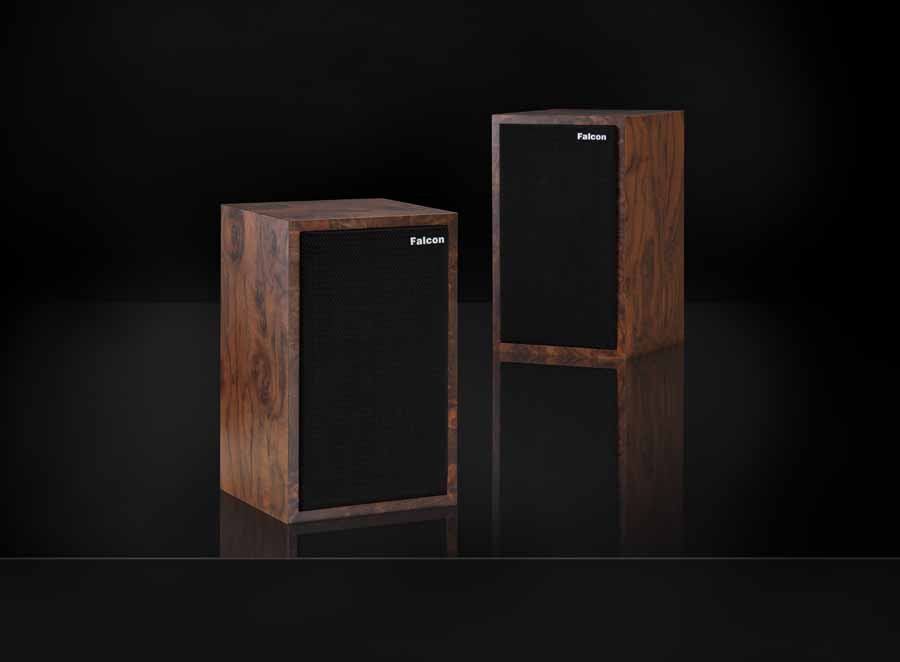
The LS3/5a are designed to work with their grilles in place.
Yep, Motorhead sounds utterly lacking through these and the guy I mentioned towards the start of this review was probably right that it wasn’t the right kind of music to match with them. Not wholly unlistenable, but not the best either, though some of that may be down to the recording/production being how it is – dirty and heavy. Turn on the subs and crank the volume up a bit (but not too far) and that changes somewhat to a much more filled out and rock presentation, though not perfect. I actually listened to the whole of the Overkill album and really enjoyed it again.
CONCLUSION
Look, these speakers don’t do everything well – they can’t, that’s just a physical impossibility, but what they do right they do oh so right. I haven’t listened to other /5as in our systems and so this review should be seen as being done without reference to other LS3/5a models and iterations. What I can say is that if this is how the originals sounded then I can sort of see why they command such high prices on that auction site we all know the name of. However, without a doubt, I’d rather spend my dosh on a pair of new speakers with a guarantee, from a reputable company, with the correct licensing deal, and without having to deal with all the hassles that buying secondhand inevitably brings – hello, Falcon.
If you listen to small or large-scale classical music and you don’t live in the Royal Albert Hall (other massive spaces are available) then these speakers offer a fantastic listening experience in many ways. If you listen to singer-songwriters then these are brilliant. Imaging is superlative and they just seem to effortlessly dig out details and noises that you knew were there but didn’t take much notice of before, but all this is done organically and naturally.
The surprise of the show (and I’m quite glad of this seeing as they are a permanent fixture here) is that they can do well-produced dance music very well, though with obvious limitations in the very low bass.
The Falcon LS3/5a Golds are not a speaker for all occasions, of that there is no doubt, but they do some things so beautifully well that since they have been set up they haven’t been out of the room – yes other speakers have been dragged in and out, but these have remained on their stands and in their carefully set up position – and that’s where they will be staying.
This pair of speakers caused me many headaches (perhaps more so than any other product we have had for review) when it came to giving them an appropriate award. My heart wants to give them the highest accolade I can (The Editor’s Choice) as I really do love the way they perform, but my head is insisting that whilst they really do excel in some areas they cannot be seen as being seen being perfect in all circumstances (which has me erring on the side of a 5-Heart award). But then again I am the editor of this here publication and I have chosen to have them remain in this system as a future reference, and so they are a defacto “Editor’s Choice”. But then the Editor’s Choice award was designed for truly outstanding products and we give them out rarely and then always following a lot of discussion – there’s been a LOT around these.
So, the award I’m giving these comes with caveats, as outlined in the review itself. However, keep these loudspeakers within what they were designed to do (and a bit more) and they are something really special!
Get yourself in front of a pair and have a listen!
AT A GLANCE
Build Quality: Nothing at all to criticise. They look good and are impeccably put together. They are boxy but then that is the nature of this particular wee beasty.
Sound Quality: They excel in mid clarity and offer up a supremely detailed sound with excellent insight into the instruments being played, particularly acoustic instruments. They do not go low at all, but what bass there is is presented tightly and without bloom – add a pair of subs and this is easily remedied. On spoken word they are brilliant. They can do dance music but in reality, they need that sub to enjoy this kind of music at its best.
Value For Money: They aren’t cheap and for a small box they look expensive. However, they are beautifully put together and sound splendid. Add a sub and you have a fully-fledged full ranger and so you do the maths.
We Loved:
Clarity of tone
Height, width, and depth of the stage
Natural sounding through the mids and without colouration
Smooth and not overexaggerated high frequencies
Easy to set up but time is needed to fine-tune to get the very best from them
We Didn’t Love So Much:
Get a bit flustered when pushed to high volumes
Unforgiving on poor material – is this a negative?
Not great with all genres for obvious reasons
Not a lot of box for your money, but then gems are small and expensive
Need to be on good stands and at the right height
Elevator Pitch Review: A stunningly good speaker that excels with vocal reproduction and acoustic instruments, though they can do well-produced techno very well too – with obvious low-end limitations. They don’t go low, and some will want to reinforce them with sub/s, but if you can forgive them this you will have a speaker that is accurate and with possibly the best midband performance you could hope for. They won’t play at concert hall levels but do go plenty loud enough.
Price: From £2474

Stuart Smith
Review Equipment: Raspberry Pi Streamer with linear PSU and running Roon, LAB 12 DAC and Pre. Krell power amplifier. Cables by Tellurium Q, Chord, and Atlas. Subs by REL. Room treatment by GIK.
Features:
- System type: Two-way infinite baffle (sealed box)
- Frequency response: 70Hz – 20kHz ± 3dB
- Sensitivity: 83dB for 2.83V @ 1m
- Nominal impedance: 15 ohm
- Bass/Midrange driver: 138mm Falcon Acoustics B110 – Graded and Computer Matched
- Tweeter: 19mm Falcon Acoustics T27 – Graded and Computer Matched
- Crossover: Falcon Acoustics FL6/23 (BBC Design) Graded and pair-matched components throughout
- Crossover frequency: 3kHz
- Cabinet: Selected grade Baltic Birch Ply, Beech battens, internally damped
- Finishes: Cherry, Walnut, Rosewood, Burr Walnut, Yew natural wood veneers (Special editions: Gold Badge)
- Dimensions: 305mm H x 190mm W x 165mm D.
- Weight: 5.35 kgs each













































